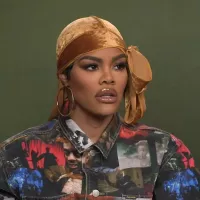The tiger is a large cat species native to Asia, belonging to the Panthera genus. It is characterized by its muscular build, large head and paws, long tail, and distinctive orange fur with black vertical stripes. Traditionally, tigers are classified into nine subspecies, though some classifications recognize only two: mainland Asian tigers and those inhabiting the Sunda Islands.
1925: Estimated 80,000 tigers killed between 1875 and 1925
An estimated 80,000 tigers were killed between 1875 and 1925.
1935: Tiger attacks in the Sundarbans caused 1,396 human deaths
Tiger attacks in the Sundarbans caused 1,396 human deaths in the period 1935–2006 according to official records of the Bangladesh Forest Department.
2003: Tiger attack ends Siegfried & Roy act
In 2003, Siegfried & Roy's act ended when a tiger attacked Roy during a performance.
2004: Tiger voted world's favourite animal in online poll
In a 2004 online poll involving more than 50,000 people from 73 countries, the tiger was voted the world's favourite animal with 21% of the vote.
2006: 1,396 human deaths by tiger attacks in Sundarbans since 1935
According to official records of the Bangladesh Forest Department, Tiger attacks in the Sundarbans caused 1,396 human deaths in the period 1935–2006.
2009: Tigers most traded circus animals
In 2009, tigers were the most traded circus animals.
2010: Anti-poaching operations established in Nepal
In 2010, Anti-poaching operations were established in Nepal, with increased cooperation and intelligence sharing between agencies.
2011: Anti-poaching efforts in Russia increased
In 2011, increased anti-poaching patrol efforts in four Russian protected areas contributed to reducing poaching, stabilising the tiger population, and improving protection of ungulate populations.
2014: Anti-poaching efforts in Russia contributed to reducing poaching
Anti-poaching patrol efforts in four Russian protected areas during 2011–2014 contributed to reducing poaching, stabilising the tiger population and improving protection of ungulate populations.
2015: Decrease of poaching frequency in Taman Negara
In 2015, Anti-poaching patrols in the 1,200 km large core area of Taman Negara lead to a decrease of poaching frequency from 34 detected incidents in 2015–2016 to 20 incidents during 2018–2019.
2016: Decrease of poaching frequency in Taman Negara
In 2016, Anti-poaching patrols in the 1,200 km large core area of Taman Negara lead to a decrease of poaching frequency from 34 detected incidents in 2015–2016 to 20 incidents during 2018–2019.
2018: Tiger found to be most popular wild animal in study
A 2018 study found the tiger to be the most popular wild animal based on surveys, as well as appearances on websites of major zoos and posters of some animated movies.
2018: Decrease of poaching frequency in Taman Negara
In 2018, Anti-poaching patrols in the 1,200 km large core area of Taman Negara lead to a decrease of poaching frequency from 34 detected incidents in 2015–2016 to 20 incidents during 2018–2019.
2019: China and Russia signed a memorandum of understanding for transboundary cooperation
In 2019, China and Russia signed a memorandum of understanding for transboundary cooperation between two protected areas, Northeast China Tiger and Leopard National Park and Land of the Leopard National Park, that includes the creation of wildlife corridors and bilateral monitoring and patrolling along the Sino-Russian border.
2019: Poaching declared a serious crime
In 2019, poaching and trafficking were declared to be moderate and serious crimes.
2020: Most captive tigers in the US not housed in approved zoos
In 2020, only 6% of the captive tiger population in the United States were being housed in zoos and other facilities approved by the Association of Zoos and Aquariums.
2020: Captive tiger populations in Asia, US, and Europe
In 2020, there were over 8,000 captive tigers in Asia, over 5,000 in the US and no less than 850 in Europe.
2022: Private keeping of tigers banned in the US
In 2022, the keeping of tigers and other big cats by private people was banned in the US.
2025: Tiger reintroduction planned for Ile-Balkash Nature Reserve
In Kazakhstan, habitat restoration and reintroduction of prey species in Ile-Balkash Nature Reserve have progressed and tiger reintroduction is planned for 2025.
Mentioned in this timeline
India officially the Republic of India is a South Asian...
Myanmar also known as Burma is a Southeast Asian country...
China officially the People's Republic of China PRC is an...
Kazakhstan a landlocked country in Central Asia with a small...
Russia officially the Russian Federation is a transcontinental country spanning...

The domestic cat is a small domesticated carnivorous mammal and...
Trending

3 months ago Luke Altmyer leads Illinois against USC, Bielema faces reality check in Week 5.

9 months ago Gabriel Magalhães injured during Arsenal's match against Fulham, raising concerns before Real Madrid game.

8 months ago Tesla Launches Cheaper Rear-Wheel Drive Model Y in the United States
Celtic F C is a professional football club based in Glasgow Scotland competing in the Scottish Premiership Founded in to...

2 months ago Angela Bassett As Queen Ramonda Stuns At Vogue World 2025; Black Panther Tribute.

2 months ago Dua Lipa and Coldplay Advocate for Fair Ticket Prices in the UK.
Popular

Stranger Things created by the Duffer Brothers is a popular...

XXXTentacion born Jahseh Dwayne Ricardo Onfroy was a controversial yet...
Turning Point USA TPUSA is an American nonprofit organization founded...
The Kennedy Center Honors are annual awards recognizing individuals and...

Bernie Sanders is a prominent American politician currently serving as...

Candace Owens is an American conservative political commentator and author...
